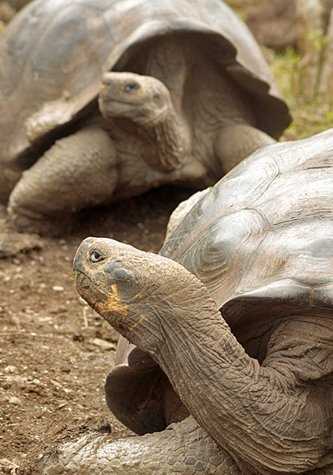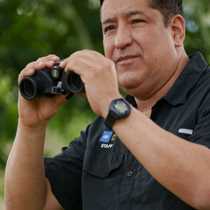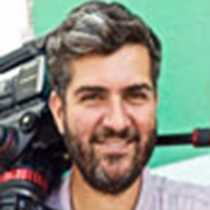On this special expedition, the first ever two-week Epic Photo adventure around the magical Galápagos archipelago, we have had a great time already surrounded by the inherent beauty of the volcanic landscapes, the magic of the changing weather and the ecological naiveté of the islands’ wildlife. Today was no exception; in fact, it was unforgettable!
This morning, with Puerto Baquerizo Moreno Town in the horizon, we woke up in high spirits and eager to explore the marvels of San Cristobal Island. In the morning, after a dry landing at the town's main dock, we boarded a series of buses for a forty minute drive to the highlights of San Cristobal. The ride let us see the surprising changes in weather and vegetation—dry when we started in the northwestern side of the island, rainy at the highest elevation, and dry once again we descended to the southeastern flank. We visited La Galapaguera de Cerro Colorado, which has become a successful semi-captive program in the ecological restoration of the populations of the endemic San Cristobal giant tortoises. The installations were built to improve the status of the population of the endemic island tortoises, Geochelone chatamensis, in an environment with conditions similar to their natural state.
La Galapaguera is found in the vicinity of Cerro Colorado, small elevation from which it derives its name, which is one of the few places where the curve-spined calandrinia (Calandrinia galapagosa), a plant endemic to San Cristobal in danger of extinction, can be seen. In the lookout point of Cerro Colorado, we admired a dreamlike volcanic coast and a couple of San Cristobal endemic plants, such as the Galapagos rock-purslane (Lecocarpus darwini) and the Calandrinia. We spotted some few San Cristobal lava lizards, San Cristobal mockingbirds, Darwin finches and Galapagos flycatchers as well.
One of the many small orientation signs located in the center reads “Giant tortoises on land and birds on the sky”. It was true, many active giant tortoises were seen all around, and many little birds were passing by as well. The juveniles that were born and temporarily live in the center represent a brighter future for these gentle giants. One day they will repopulate the island, bringing their species back little by little to greater numbers, as they used to be before their unfortunate exploitation.
After lunch and a photographic session, we enjoyed a beautiful late afternoon visit in a soft sandy beach in the vicinity of a tuff cone known as Cerro Brujo, which translates to the English language as Wizard Hill. At the beach we had plenty of time for a leisurely walk, photographing and admiring the abundant fauna found in this location. We even had the opportunity to swim in the turquoise shallows. A striking sunset was a golden finale for this day, on our expedition around the world famous Galapagos Islands.









